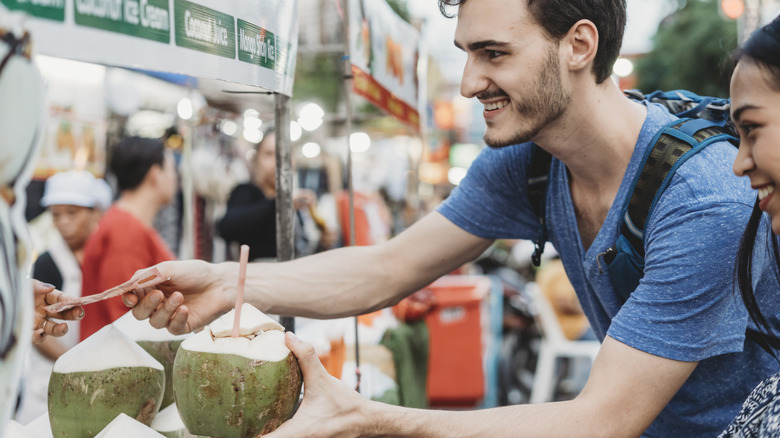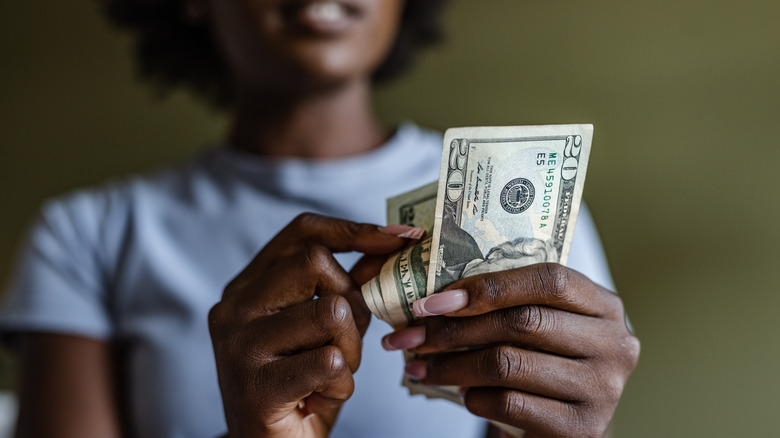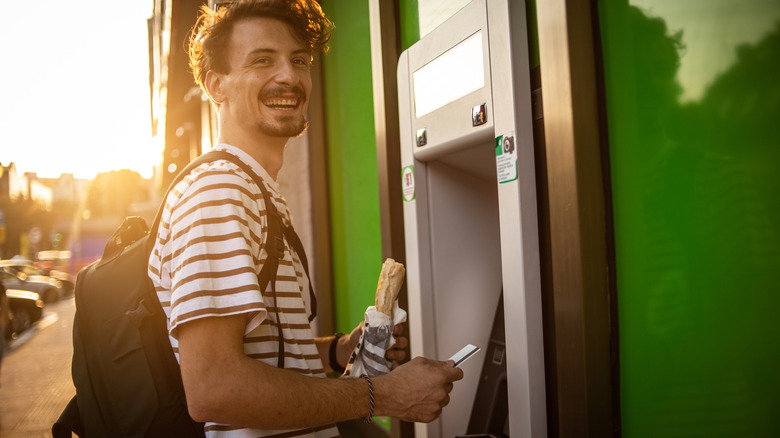Here's Why You Should Always Pay In The Local Currency While Traveling Abroad
Whenever you're gearing up to explore a new destination, deciding on currency can be a puzzle. Do you exchange a wad of cash at the airport to keep you going the entirety of your trip? Do you ditch the bills and coins and opt to pay with your credit card wherever possible? It's a tangle of choices that can have a significant impact when you're traveling on a budget.
Luckily, the answer is quite simple: Whatever you do and wherever you go, make sure to always pay in the local currency. Even if you're offered the chance to pay in USD, choosing to pay as the locals do can end up saving you up to 12% in markups in the long run, according to Airfare Watchdog. When the terminal prompts you, or when you're handed a restaurant bill with both local and U.S. currency on it, select the local option confidently — and rest assured that you'll be getting the better end of the deal.
But why is there an uptick in what you're paying? According to Forbes, when you choose to pay in USD, a Dynamic Currency Conversion fee is immediately applied to your purchase. Depending on your bank, this fee can be about 1% of the total transaction amount on top of any additional foreign transaction fees — and choosing to pay in USD won't exempt you from these fees when you're using the card abroad. This means more unnecessary expenses and an uptick in what you're actually spending.
Convenience at a cost
Sure, the allure of convenience is undeniable. But what might seem easier at the moment can actually end up costing you more than you think.
In tourist hubs frequented by U.S. travelers, some establishments might tempt you with the option to pay in USD using cash. After all, paying in a familiar currency gives you an added sense of security. However, this "convenience" often comes at a hidden cost. So, while tourist hotspots in Mexico, for example, might accept USD, the exchange rates they typically apply themselves are often less than favorable than if you'd done the math and paid in Mexican pesos instead, according to Monito.
For instance, let's say you're buying a drink priced at 100 Mexican pesos or its USD equivalent — around $5 — using cash. However, the business might decide to charge you $6 for the same drink. This basically means you're shelling out an additional 20%. Often called a "convenience fee" by local vendors, they're essentially billing you for the inconvenience of having to handle the foreign currency themselves.
Banking smart overseas
Paying via card doesn't protect you from the pitfalls of exchange rates and fees. However, there are a few tactics you can employ to make sure you're getting the best bang for your buck. A great way to minimize foreign transaction fees, for example, is by opting for specialized credit cards for travelers. From Capital One's SavorOne credit card to Chase Sapphire's Preferred card and Bank of America's Travel Rewards credit card, there are plenty of well-rated options out there to choose from that are all well worth looking into. Especially considering the fact that certain international fees can range from 1% to 3% — meaning that if you're spending $1,000, you can expect to see an additional $30 charge.
Also, many modern banking platforms have started catering to the avid traveler beyond waiving these fees. Banks like Charles Schwab, for example, offer their clients free ATM withdrawals abroad and even reimburse any ATM fees once they're back home. Similarly to what happens when paying with a terminal, make sure you always decline the conversion offered by the local ATM. Don't worry — your cash will still come out; it'll simply be converted using the rate set by your bank.
At the end of the day, it's by making choices and leveraging the benefits of travel-friendly banking options that you can ensure that more of your money is spent on experiences ... and less on unnecessary fees.


